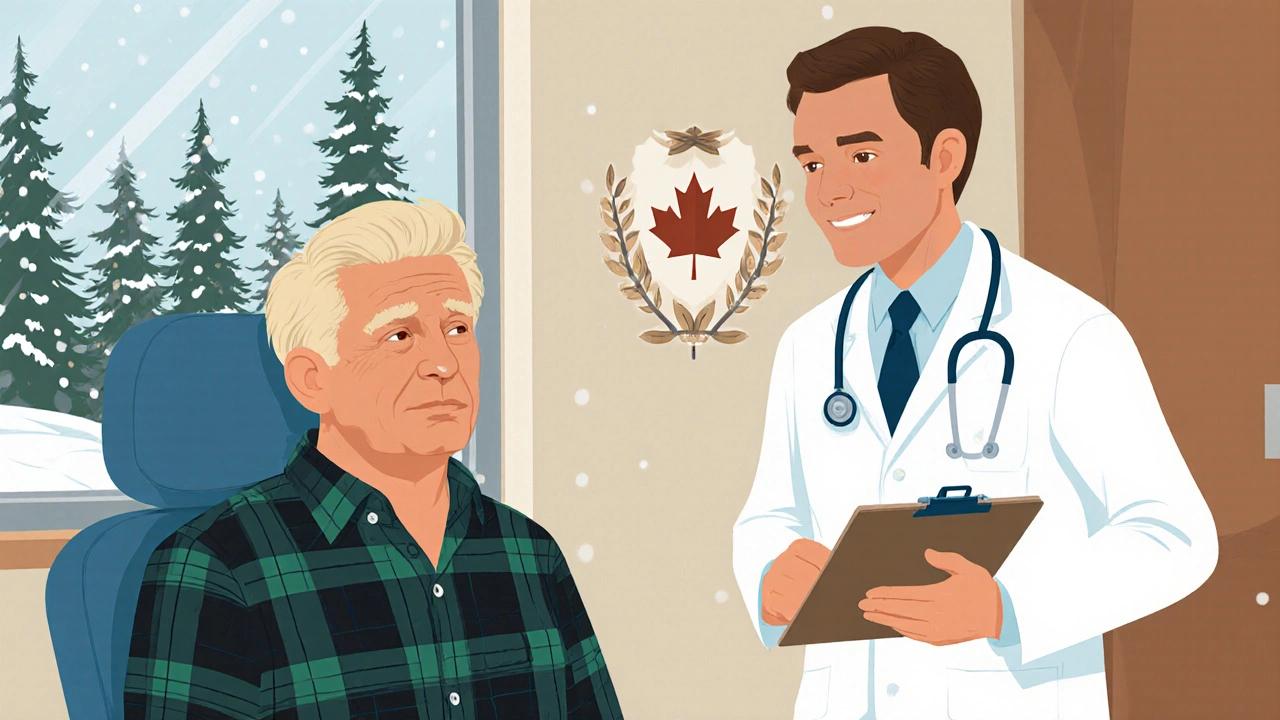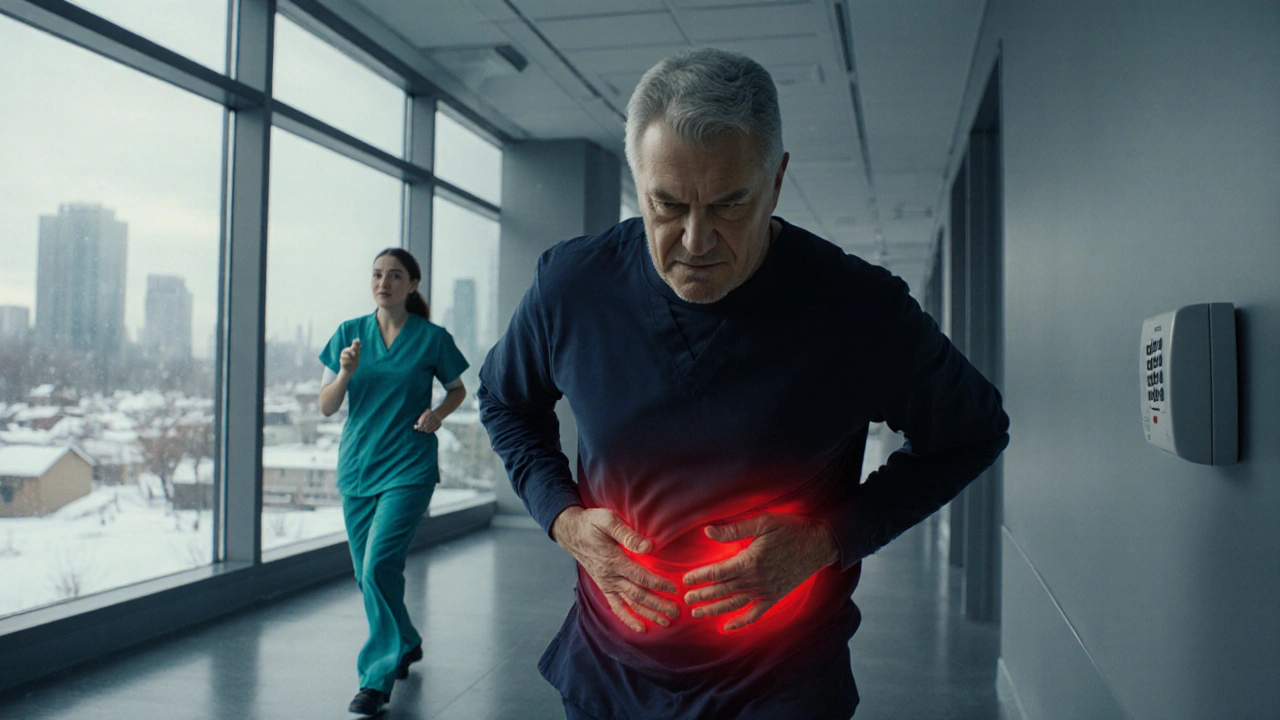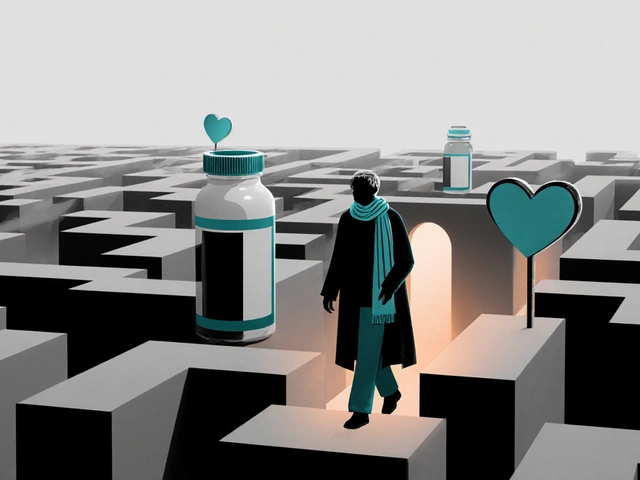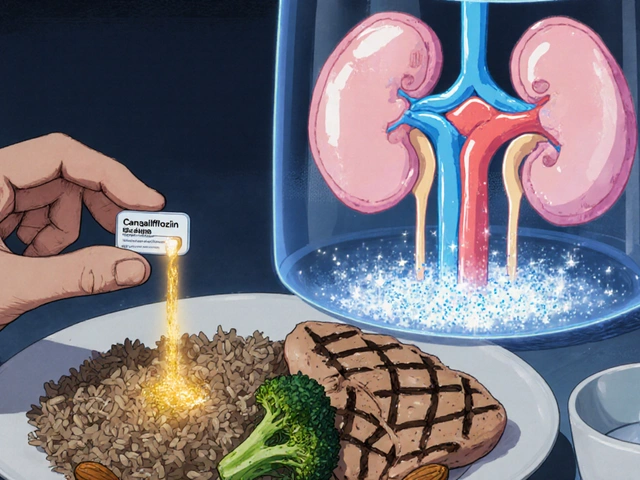
Key Points
- Typical BPH symptoms include frequent urination, nocturia, and a weak stream.
- Seek medical help if you experience urinary retention, blood in urine, or pain.
- Early evaluation involves a PSA test, digital rectal exam, and possibly ultrasound.
- Mild cases can be managed with lifestyle changes and medication.
- Moderate to severe BPH may require minimally invasive procedures or surgery.
What is BPH?
When men talk about prostate problems, they’re often referring to BPH is a condition where the prostate gland enlarges harmlessly, pressing against the urethra and causing urinary trouble. The prostate, a walnut‑sized organ located just below the bladder, produces fluid that mixes with sperm. As men age, hormones trigger the tissue to grow, leading to the classic symptoms of benign prostatic hyperplasia.
Typical Symptoms to Watch For
Most men notice a gradual change in bathroom habits. The most common signs include:
- Urinary frequency - needing to go more than eight times a day.
- Nocturia - waking up at night to urinate, often two or more times.
- Weak urine stream - a slow or interrupted flow that starts and stops.
- Feeling of incomplete bladder emptying.
- Dribbling at the end of a void.
These symptoms usually develop slowly, and many men attribute them to normal aging. However, the pattern and severity matter more than the label.
Red‑Flag Symptoms: When to Call a Doctor
Most BPH symptoms aren’t emergencies, but a few warning signs demand prompt evaluation:
- Acute urinary retention - an abrupt inability to start urinating, causing painful bladder fullness.
- Blood in urine or semen, which could indicate infection or another condition.
- Persistent pain in the lower abdomen, back, or pelvic area.
- Fever, chills, or burning with urination - possible urinary tract infection.
If any of these appear, book an appointment within 24‑48hours.
What Happens at the Doctor’s Office?
When you finally sit down with a urologist who specializes in urinary and prostate health, the visit typically follows these steps:
- Medical history review - the doctor asks about symptom frequency, night‑time trips, and any pain.
- Physical exam - a digital rectal exam (DRE) lets the physician feel the size and texture of the prostate.
- Laboratory testing - a PSA test measures the prostate‑specific antigen level in blood, helping rule out prostate cancer.
- Imaging - ultrasound or uroflowmetry may be ordered to see how well urine passes through the urethra.
Based on findings, the doctor classifies the condition as mild, moderate, or severe and recommends a treatment plan.

Managing Mild Symptoms
If your symptoms are occasional and not disruptive, lifestyle tweaks often do the trick:
- Limit caffeine and alcohol, which irritate the bladder.
- Reduce fluid intake a few hours before bedtime to curb nocturia.
- Practise double‑voiding - go to the bathroom, wait a few minutes, then try again to empty the bladder fully.
When lifestyle changes aren’t enough, medication is the next step. The most common class is alpha‑blockers - drugs that relax the muscle fibers around the prostate and urethra, improving flow. They work quickly, often within days, and have few serious side effects.
Treatment Options for Moderate to Severe BPH
When symptoms interfere with work, sleep, or quality of life, doctors consider more aggressive interventions:
- 5‑Alpha‑Reductase Inhibitors - shrink the prostate over months by blocking the hormone that fuels growth.
- Minimally Invasive Therapies - such as trans‑urethral microwave therapy (TUMT) or water‑based steam (Rezūm), which destroy excess tissue without major surgery.
- Surgical Removal - the gold‑standard is TURP (trans‑urethral resection of the prostate), where a surgeon cuts away obstructive tissue through the urethra. TURP relieves blockage in 90% of cases and has a low long‑term recurrence rate.
Choosing a route depends on prostate size, overall health, and personal preference. Your urologist will walk you through benefits, risks, and recovery time.
Quick Comparison: Mild vs. Moderate vs. Severe BPH
| Severity | Typical Symptoms | When to Seek Care | Suggested Management |
|---|---|---|---|
| Mild | Occasional nocturia, slight weak stream | If symptoms persist >6months | Lifestyle changes, watchful waiting |
| Moderate | Frequent daytime trips, noticeable dribbling | Any impact on work or sleep | Alpha‑blockers ± 5‑alpha‑reductase inhibitor |
| Severe | Acute retention, constant urgency, pain | Immediately (within 24h) | Minimally invasive therapy or TURP |
What to Expect After Treatment
Most men notice symptom relief within a few weeks of medication, though full effect may take up to three months. Minimally invasive procedures often allow same‑day discharge and a return to normal activities in a few days. Surgical recovery from TURP usually involves a short hospital stay, a catheter for 1‑2days, and a gradual return to full activity over six weeks.
Follow‑up appointments are essential to monitor PSA levels, urine flow, and any side effects. Adjustments to medication or additional therapy may be needed based on progress.
Frequently Asked Questions
Can BPH turn into prostate cancer?
No. BPH and prostate cancer are separate conditions. However, both can cause an elevated PSA level, so doctors use additional tests to rule out cancer when BPH is suspected.
Is it normal to have nighttime urination after 50?
Mild nocturia becomes more common with age, but more than two trips per night or a sudden increase warrants a check‑up, especially if accompanied by other BPH signs.
Do alpha‑blockers affect sexual function?
Most men tolerate alpha‑blockers well. A small percentage may experience dizziness or retrograde ejaculation, but serious sexual side effects are rare.
When is surgery the best option?
Surgery, such as TURP, is recommended for severe obstruction, repeated urinary retention, or when medication fails to improve quality of life.
Can lifestyle changes replace medication?
Lifestyle tweaks can lessen mild symptoms, but they rarely eliminate the need for medication if the prostate is significantly enlarged.
Write a comment
Your email address will not be published.





11 Comments
Take it easy and keep an eye on those night trips!
Good overview. Lifestyle tweaks like cutting caffeine and timing fluids help early on. Meds such as alpha‑blockers are usually the next step.
I’ve been on an alpha‑blocker for a few months and the flow’s noticeably steadier. Just remember to stay hydrated and schedule regular check‑ups.
Yo, stop spoutin’ nonsense about “water‑based steam” curing everything. That stuff ain’t magic, it’s just another pricey gimmick.
Oh wow, thanks for the reality check, Camille. As if we needed a disclaimer for every medical option. Maybe next you’ll tell us the sky is blue.
Honestly, people should prioritize their health over embarrassment. Ignoring red‑flag symptoms like blood in urine is irresponsible, and it sends the wrong message about self‑care.
That’s a fair point. How often should someone get a PSA test if they’re managing mild BPH with lifestyle changes alone?
Picture this: you’re finally out of the endless bathroom trips, sleeping through the night, and life feels reclaimed. That’s the freedom medication can give when the prostate starts acting up.
Freedom? More like another pharma hook. Many men get hooked on meds that just mask symptoms instead of addressing the root cause.
Everyone’s got a take, but at the end of the day, listening to your doctor and staying consistent with whatever plan works for you is what matters.
BPH reminds us that bodies, unlike machines, age with quirks that demand attention.
When the prostate swells, it’s a signal that hormones and time are intersecting in a messy dance.
Ignoring the signal doesn’t make it disappear; it only postpones the inevitable conversation with a doctor.
Early detection through simple tests like PSA and DRE is akin to checking the oil before a road trip.
Lifestyle tweaks-less caffeine, timed fluid intake-are the low‑tech hacks that many overlook.
Medications, especially alpha‑blockers, act as lubricants easing the flow, but they don’t shrink the organ.
For those seeking a more permanent solution, minimally invasive therapies offer a middle ground between pills and surgery.
Yet every procedure carries trade‑offs, be it temporary discomfort or the risk of sexual side effects.
The true art lies in weighing quality of life against potential complications.
Patient autonomy means understanding each option, not just following a blanket recommendation.
Communication with a urologist should be a partnership, not a lecture.
Fear of diagnosis often fuels denial, but confronting the issue early can prevent acute retention.
In the broader view, BPH is a reminder that health is a continuum, not a binary state.
Embracing regular check‑ups is a practice of respect for the body’s ongoing narrative.
Ultimately, whether you choose medications, procedures, or watchful waiting, the goal remains the same: a life less interrupted by bathroom trips.